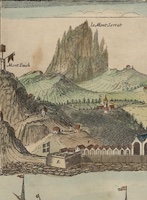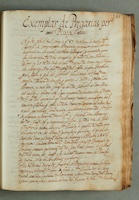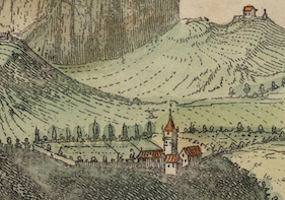Rituales pro pluvia celebrados en Barcelona en 1687
Herbert,
Helen Sophia
Universitat Autònoma de Barcelona
0009-0009-2762-7835
Resumen
Además de los detalles de las convenciones y ceremonias ordinarias del calendario litúrgico de la Catedral de Barcelona, el Manual del Cabiscol proporciona información sobre eventos extraordinarios, incluidos los rituales pro pluvia celebrados en tiempos de sequía entre los años 1687 a 1703. Estos relatos demuestran una densidad cambiante de actividad ritual en respuesta a una situación de sequía en evolución y la participación de espacios tanto dentro como fuera de la ciudad en los rituales de procesiones y oficios. La fuente también destaca el papel central de la música y el sonido para la invocación de los santos en las peticiones de lluvia de la ciudad.
Palabras clave
procesión de rogativas , letanía , antífona , himno , salve , Ave Maris Stella (himno) , Te deum laudamus (himno) , cabildo de la catedral , clerecía
In Barcelona Cathedral’s Manual del Cabiscol (1682–1729) are several written examples of the ritual responses made by the city to episodes of water shortage between the years 1687 and 1703. In these examples, it is possible to perceive what William Christian has described as a ‘graduated response’ in the increasing intensity of ritual activity in response to the community’s need for water during what was often an extended period of time. From this source it is clear that sound, and particularly singing, had a key role to play in these rituals, not only in the petitioning of saints and the Virgin Mary to intercede with God to grant rain, but also once rain had been granted, in giving thanks to God and the intercessors. Here I will give a description of the pro pluvia rituals recorded in the Manual del Cabiscol for 1687, the year in which – as Josep Pavia i Simó has also noted – the most detailed account is provided.
According to the Manual, the decision was made for the cathedral to start its pro pluvia rituals on 9 April 1687, and on the following day, after the office, processions began to be held inside the church and down to the Chapel of Santa Eulalia, with the singing of litanies. During that week, two such processions were held on alternate days, and on the days in between, the clergy went to the Chapel of Santa Eulalia where Marian antiphons and hymns were sung, including the Salve Regina and Ave maris stella (‘Nostra Senyora: Mostra te esse matrem’). Every day – with some exceptions – the antiphon Domine Rex Deus Abraham, verse and prayer for rain were inserted into the usual ceremonies for the canonical hours of Lauds and Vespers.
In response to the increasingly urgent need for rain, a procession was held on 16 April by the cathedral clergy to Santa Madrona’s Chapel on the hill of Montjuïc. Again, this procession involved the singing of litanies. Along the route, the procession stopped in front of a little chapel (capelleta) at the Ferrisa Gate (presumably part of the College of Nuestra Señora de Belén), at the door of the Carmelite Church, in front of the churches of the Minims (Convent of Jesus María), Capuchins (Monastery of Santa Margarida la Reial) and Hieronymites (Monastery of Sant Maties), and in front of the Church of Sant Antoni Abat. The Manual describes how, at each place, the four cabiscols turned to face the building, saying together 'in a louder voice' (‘ab veu mes alta’) the name of the saint to whom the church was dedicated, and how the rest of the clergy responded with the words "ora pro nobis" ("pray for us"). The cabiscols then repeated the name of the saint for a second time, and the clergy answered with "intercede pro nobis" ("intercede for us"). On reaching the Gate of Sant Antoni and leaving the city, the procession continued without any singing until it came to the Cross of Santa Madrona. There the singing of litanies was resumed, beginning with Omnes sancti et sanctae Dei, and finishing once the clergy were kneeling inside the chapel ('y se acabaren ditas lletanias estant lo Clero agenollat en la Iglesia de Santa Madrona'). A polyphonic office was sung and, following this, the procession departed again for the cathedral, carrying with it the relics of Santa Madrona and singing Regina caeli and Ave maris stella. As before, between the Cross of Santa Madrona and the Gate of Sant Antoni, the singing stopped, resuming only upon re-entering the city, where the Ave maris stella was intoned.
On the days that followed, with the saint’s relics in the cathedral, rituals within the church building continued, with processions as before on alternate days, and the singing of Marian antiphons in the Chapel of Santa Eulalia.
On 22 April, with the prayers for rain still unanswered, the cathedral began a series of processions to seven of the city’s convents and churches, the Cambras Angelicals: the Monastery of Santa Maria de Natzaret, the Convent of Sant Agustí, the Church of Santa Maria del Pi, the Convent del Carme, the Convent of La Mercè, the Covent of Santa Maria de Jonqueres, and the Church of Santa María del Mar. In each, an office for one of the Seven Joys of the Virgin was held, sung in plainchant by either the monks, nuns or clergy of the institution, or by the clergy of the cathedral. In the case of the Church of Santa Maria del Pi, which was visited on 26 April, the clergy of the cathedral and the parish church sang together. In most cases, these processions were held on alternate days, with the cathedral clergy continuing to sing the Salve in the Chapel of Santa Eulalia on the days in between. The processions that the cathedral made to the seven Cambras largely followed the same form as those to the Chapel of Santa Madrona, with the singing of litanies and calling upon the saints for their intercession outside of dedicated chapels and churches. A contingency plan had to be enacted for the procession to the seventh and final Cambra on 9 May when the clergy of Santa Maria del Mar did not receive the cathedral procession outside the church. In response, the cathedral procession returned to the cathedral, singing a polyphonic office there instead of holding it in the parish church.
Since 4 May the rain had already started to fall, and by 14th it was decided that the amount of rainfall was sufficient for the pro pluvia rituals to be brought to a close. The next day, a procession was held around the church with the singing of a Te Deum in thanksgiving for the rain. The Te Deum was sung again two weeks later in a procession to return the relics of Santa Madrona to her chapel at Montjuïc, marking the end of this episode of ritual activity in response to the community’s need for water.


